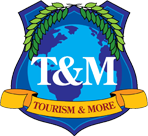Marketing tips for smaller tourism oriented communities
February 2012
The month of February is a good time for travel and tourism destinations to begin to consider new and innovative marketing ideas. Large tourism communities often can afford specialized agencies to develop new marketing plans. The same is not true however for the smaller (or poorer) destinations. Often a single person or just a few people staff these tourism offices, businesses or convention and visitor bureaus (CVBs). These people are therefore faced with a great deal of multi-tasking and rarely have the time for innovative ideas. Even larger tourism businesses and tourism offices need to reinvigorate their marketing efforts. To help you develop new marketing ideas, Tourism &More offers the following ideas and suggestions.
- Think about your name and what it says to the outside world. All too many tourism entities go for cute over clear. Use names that are clear, precise, and permit your customers to know what you have, what you offer, and what they can expect. If your community has the same name as a place in another country or state, make sure that people know who you are and in which state or country you are located.
- Develop a brand and be creative. When developing a brand involve as many parts of your tourism industry as possible. Having a cross-businesses brand means that your tourism locale will show consistency. Make sure that the brand unifies the entire tourism product so that wherever a client or customer goes the brand is unconsciously connected with your locale. Not only should the brand plus logo be on everything you produce, but it should also appear on all mailings that the locale produces.
- Connect your website with your brand and keep your website simple. The trend in tourism today is less flash and more elegant simplicity. Websites that are hard to read often turn visitors off rather than attract new clients. Remember that many people will now view your website on their smart phones. That means that the website has to accommodate a much smaller screen. When developing a website think about how many drop-down windows will work on a smart phone and how hard or easy it will be for a person to navigate the website. The bottom line in tourism websites today is get the essential information to people in the most efficient and simple manner and leave out the fluff!
- Remember that tourism is all about your community. All too often members of the tourism industry forget that they are part of the local community. That means market not only to out of town or out of country guests but also to the local community. Visitors do not judge a community by the efficiency or productivity of a tourism office, but rather on their experiences in your community. Just as in the case of politics, all tourism is local! The best way then to market your locale is to make sure that the people living in your locale understand your tourism product and find joy in it. Some of the ways to market to the local community are: creating school excursions to local sites, articles in the local media, creating local appreciation days, where residents receive discount coupons to local attractions and restaurants, and creating promotional options that encourage people to spend a night in a local hotel, dine in a new restaurant or see a new part of their community.
- Develop a tourism calendar that unifies the entire tourism product. All too often smaller communities will hold festivals that fill hotels but fail to connect the festival with the local business community. Tourism is more than merely “heads in beds”. It is an economic generator that should both unify a community and make that community more prosperous. To accomplish such a task local tourism officials, especially those in smaller communities, need to create coordinated efforts. For example an event that occurs when all of the local business are closed, may bring people to town but will not increase the community’s economic prosperity and may even harm it.
- Do what you promise. One of the great challenges in tourism marketing is the lack of credibility that comes from over-promising. Never use a photo that does not come from your community, always promote yourself but do so in a manner that when the visitor arrives s/he will not be disappointed. Do not promise what is not true!
- Seek new and creative attractions or things to do. One of the great problems in tourism is what to do during periods of inclement weather. Integrate your climatic conditions into your marketing plan. Seek alternative events so that if the weather turns sour, your guests do not simply pack up and go home. Instead work with everyone from local farmers to miners, from the local theaters to indoor arenas and create the “inclement weather brochure” so that people have a sense of sunshine even when it is raining!
- Work with the local media to get your message out. The news media often seek stories to fill their newspapers, and or the local news programs. While this need is especially true of the smaller markets, it is also true for even the larger markets. Send a new story to your local media on a regular basis. Meet with media leaders and ask them how you can be of service to them. All too often we hear that tourism people only contact the media when they want something rather than realizing that their local media are an integral part of their marketing efforts.
- Good data produce the foundation for good marketing. Take the time to meet with a local statistician to find ways to collect data that are useful to your community. Often tourism offices spend a great deal of time and money developing questionnaires that produce inaccurate or misleading results. It is wiser to spend a small amount of time with a professional statistician who can guide you data collection rather than having misleading information that produces a marketing plan based on false premises. The best way to save money and time is to do build your data collection on a solid foundation.



